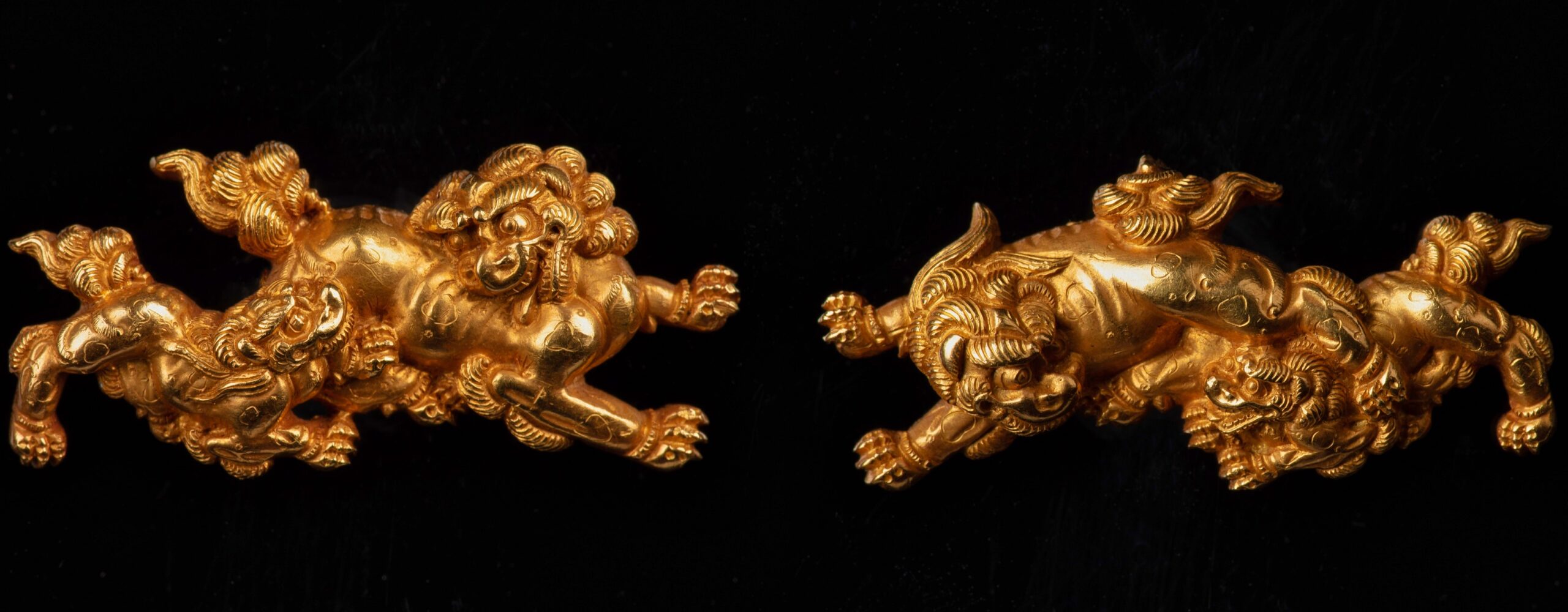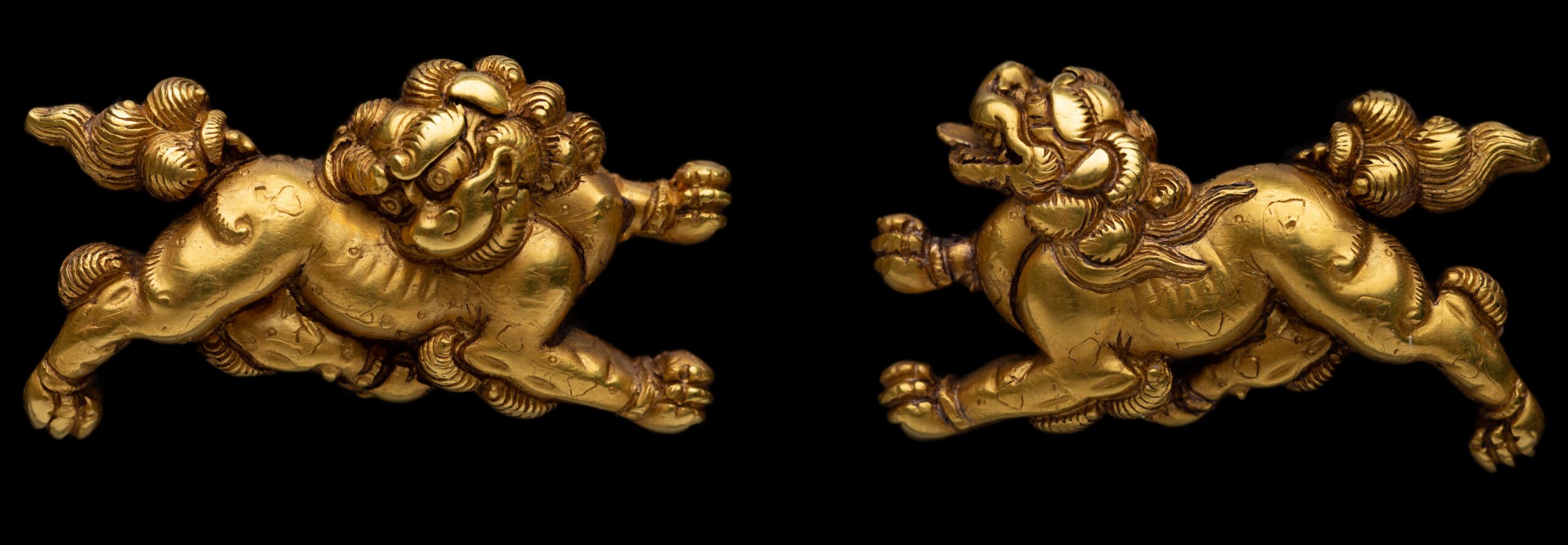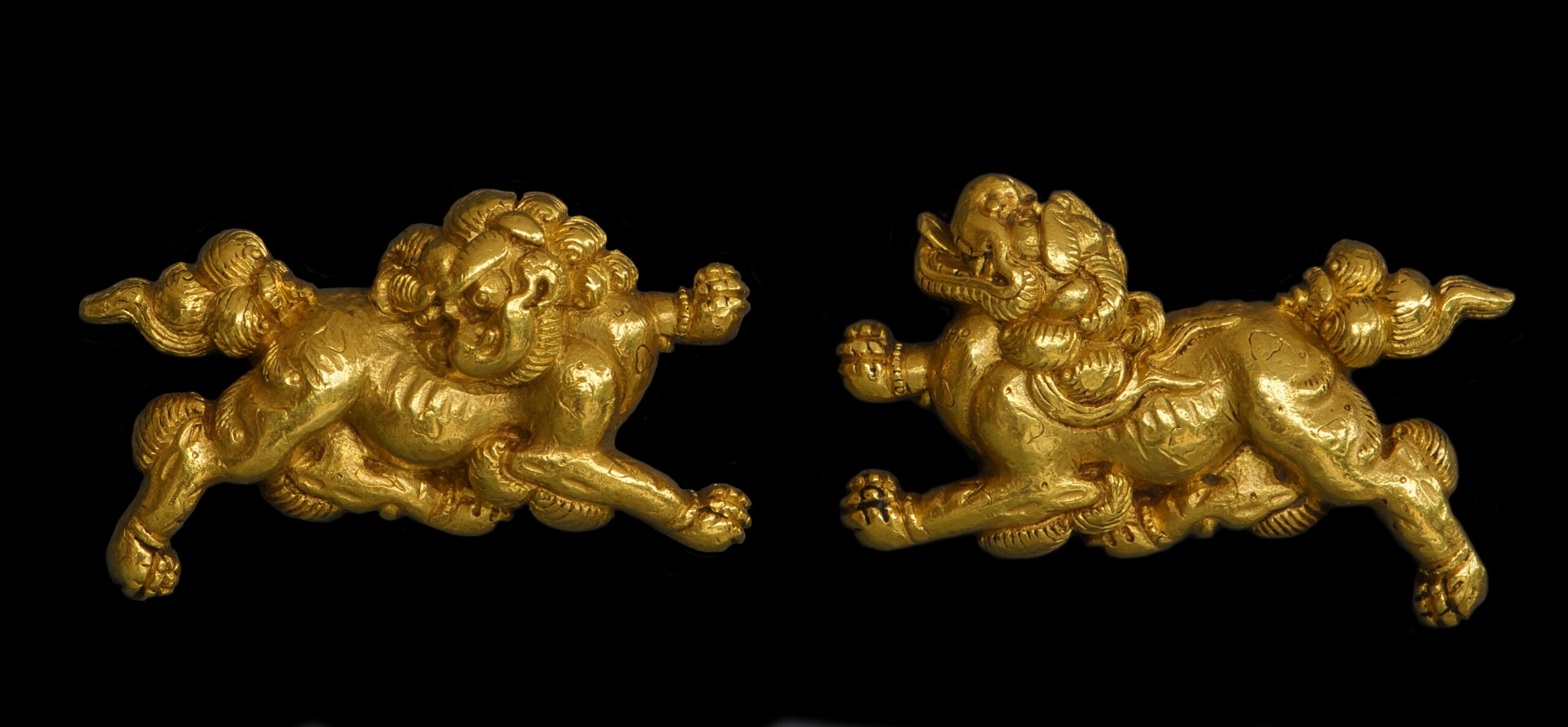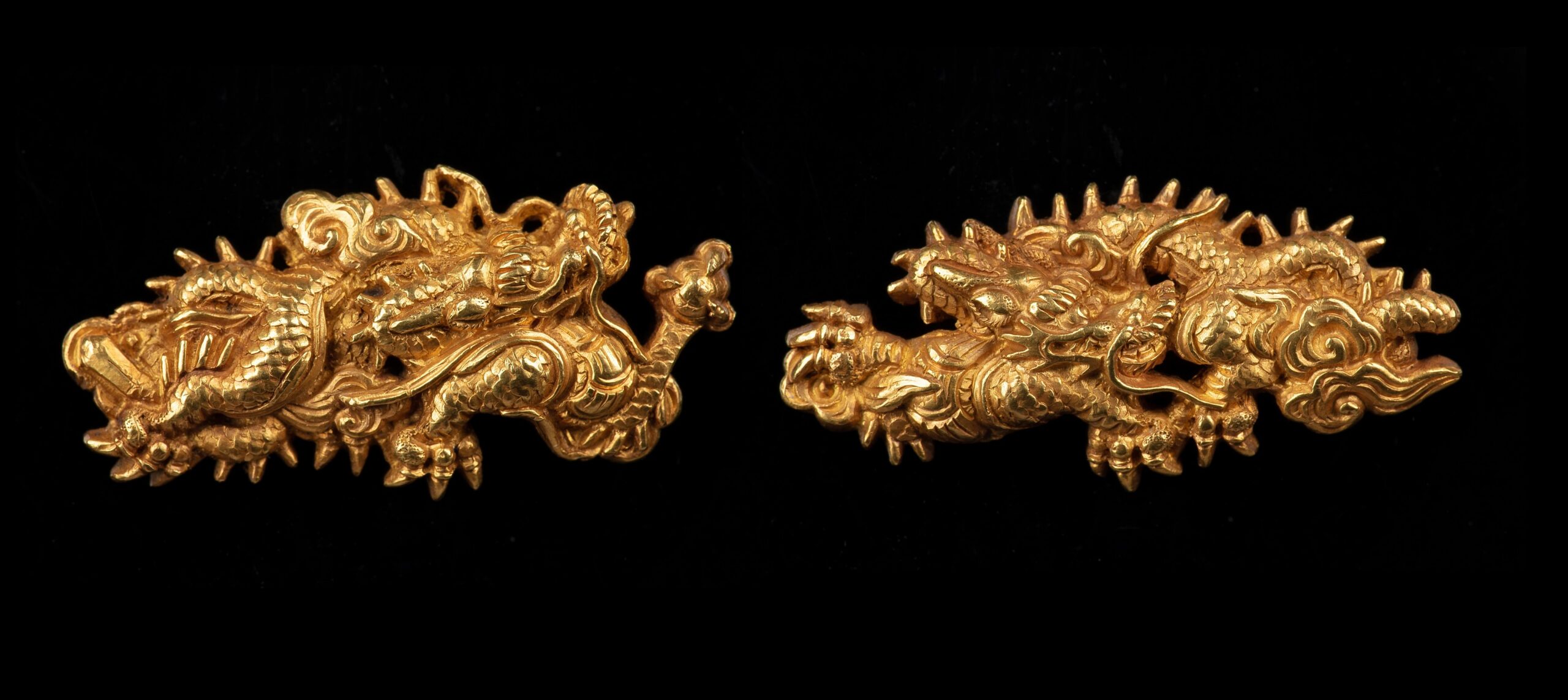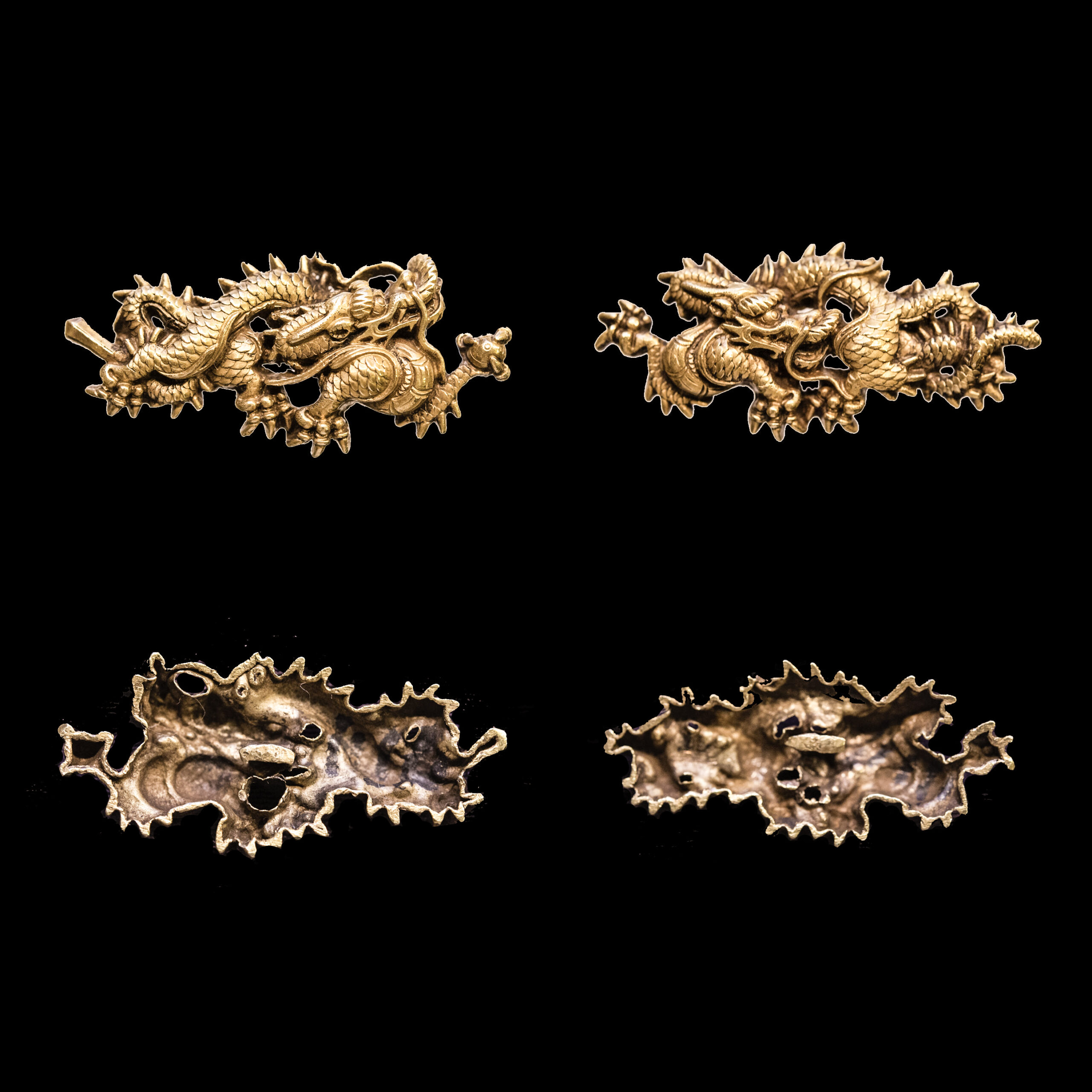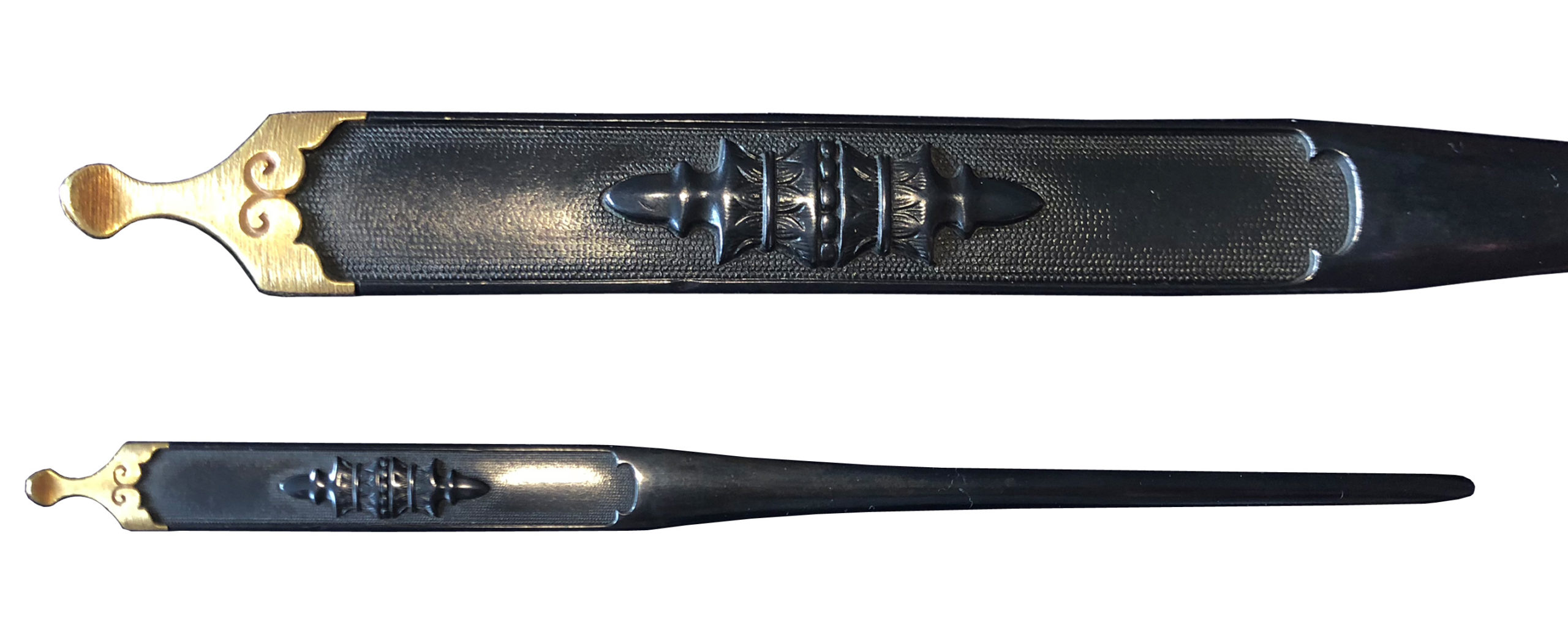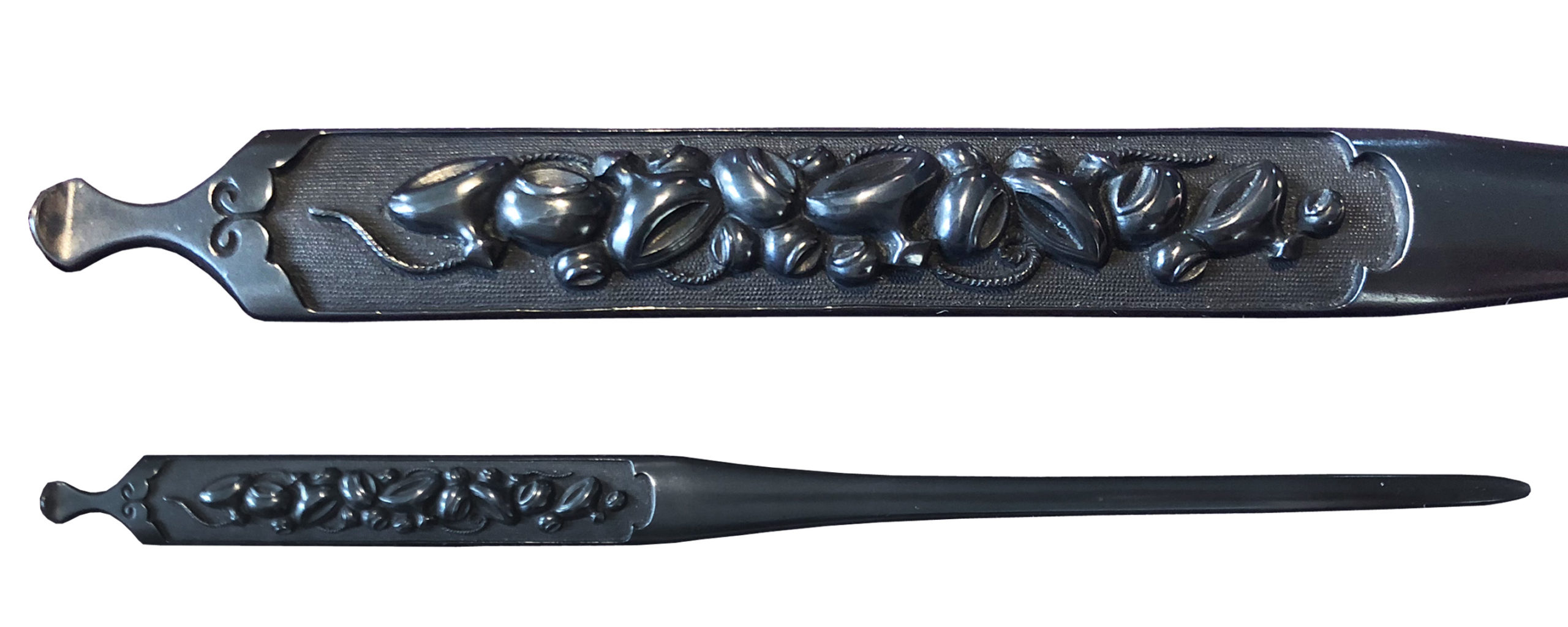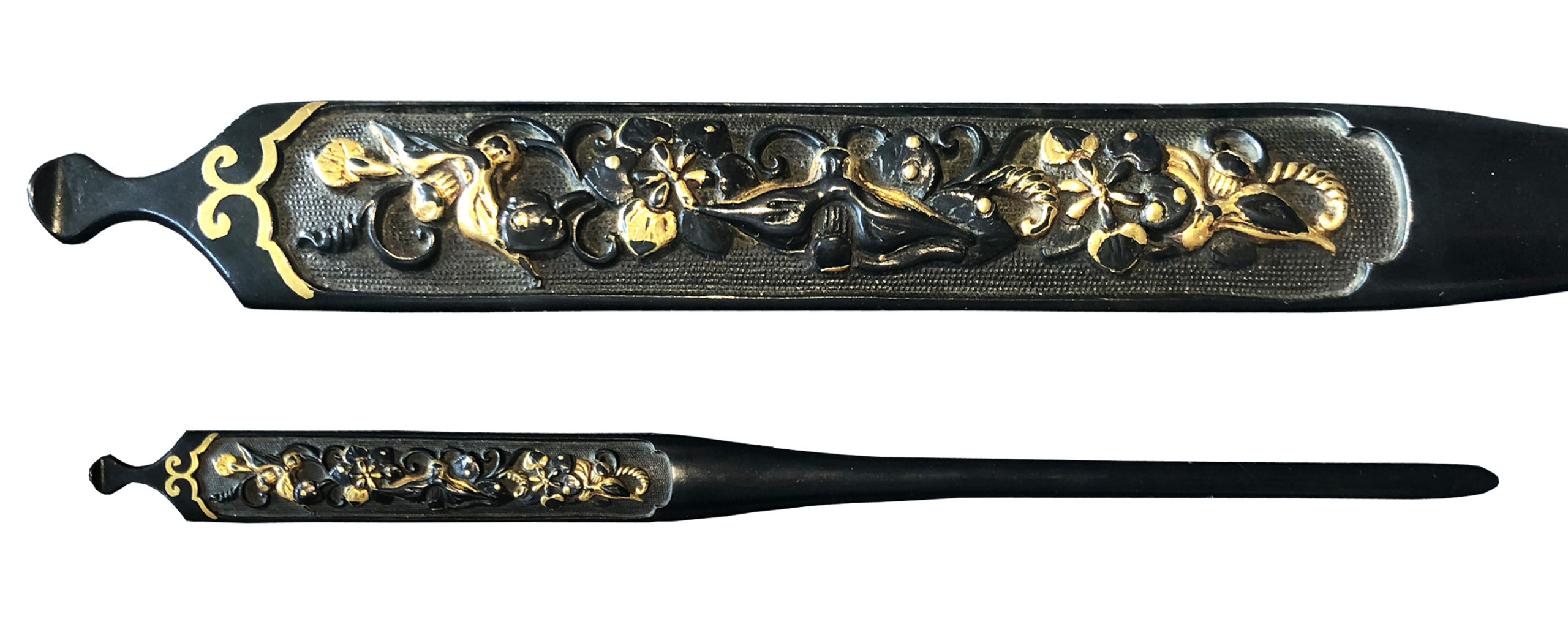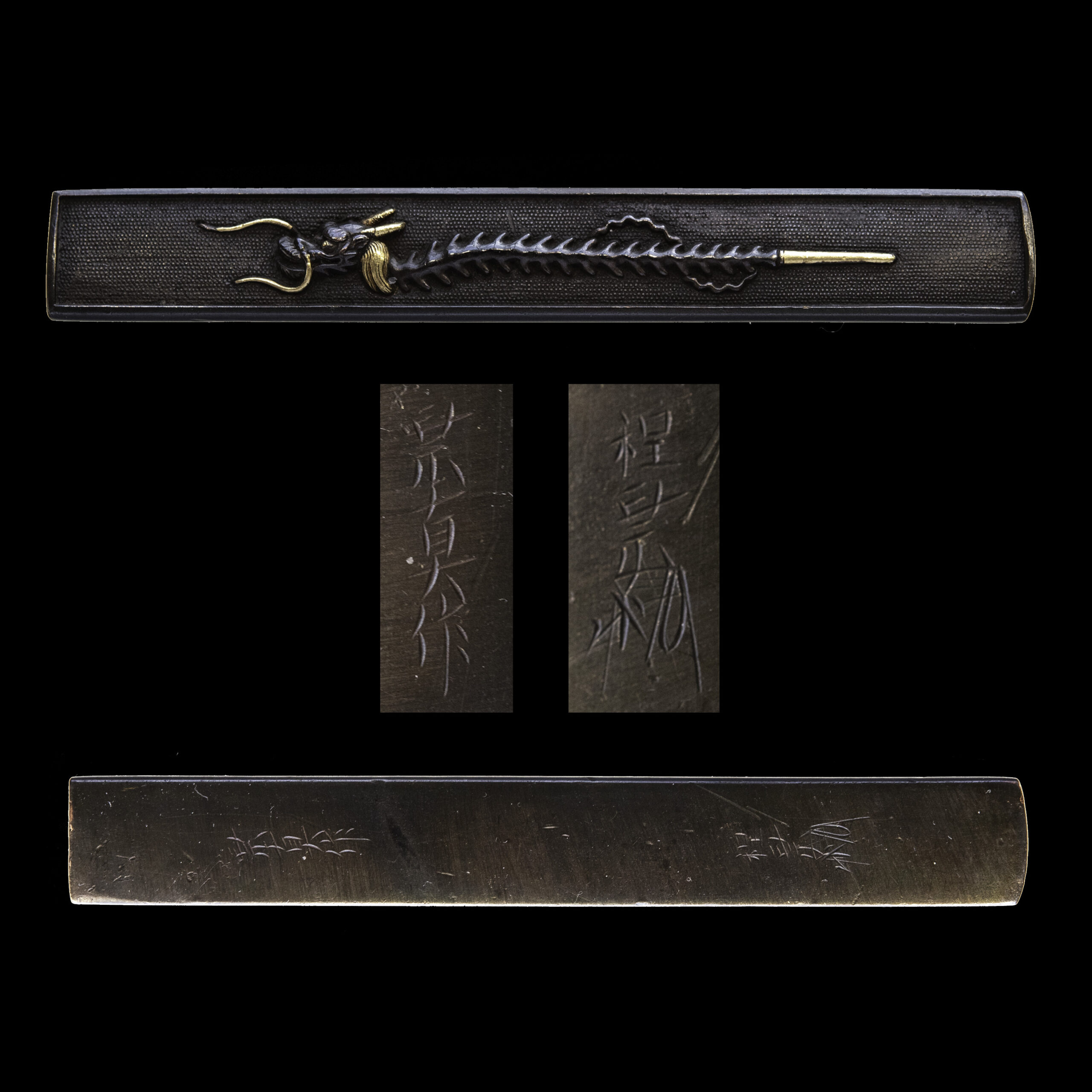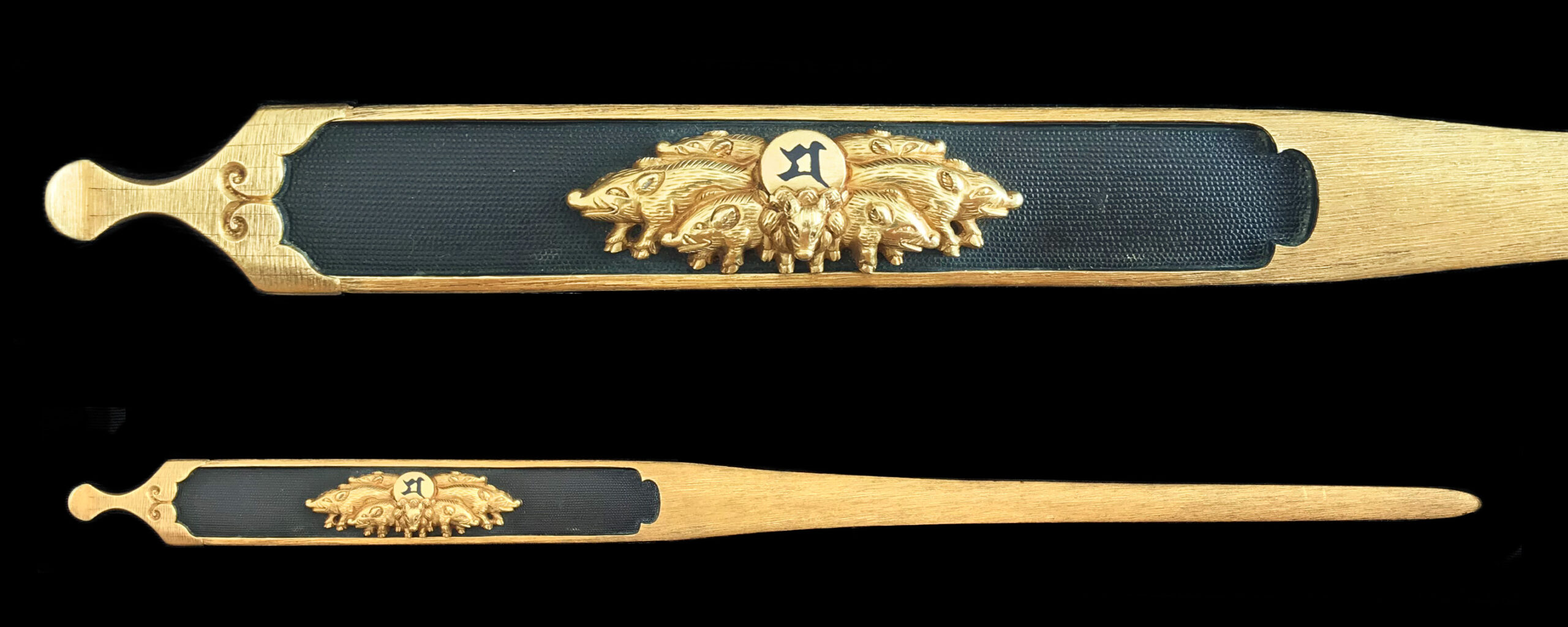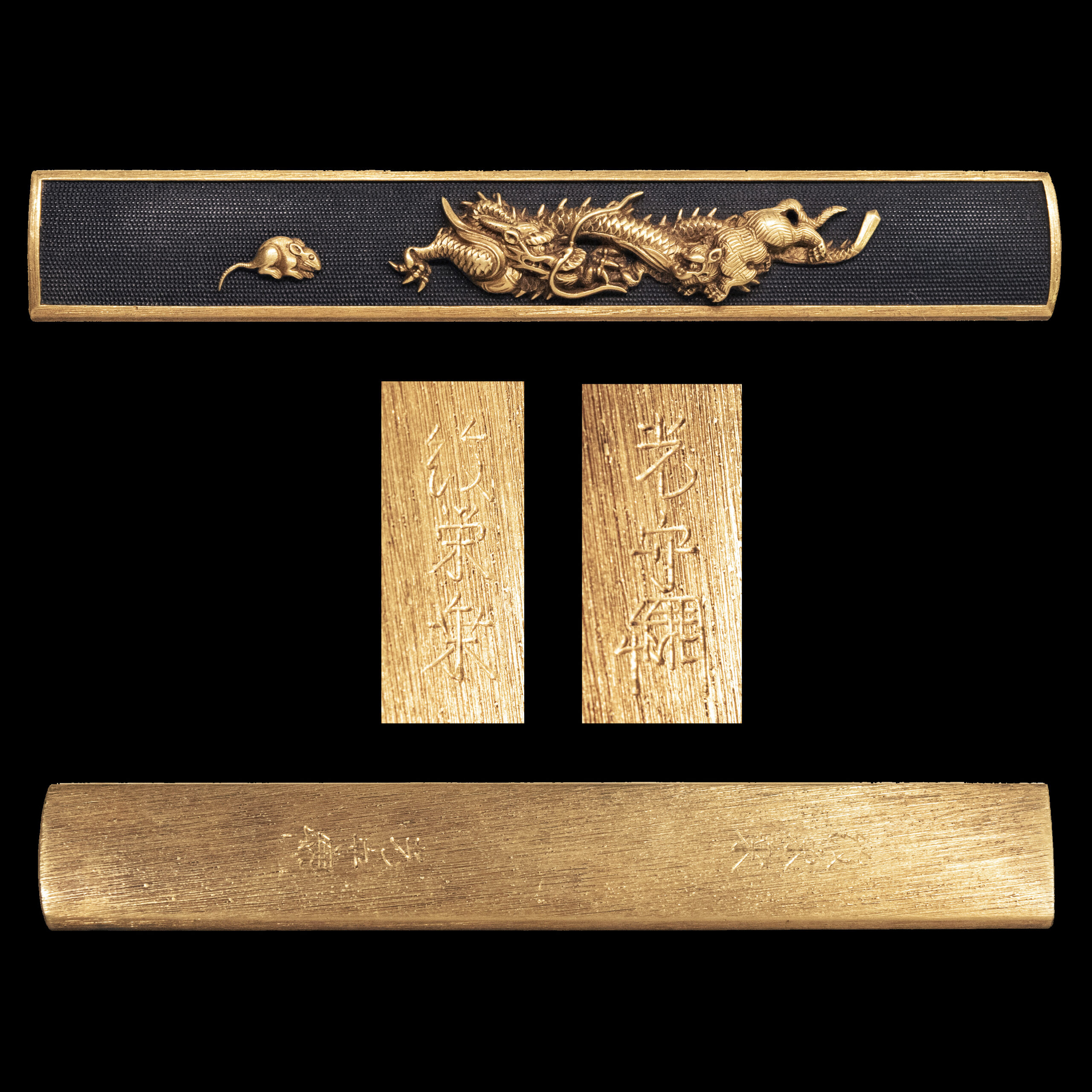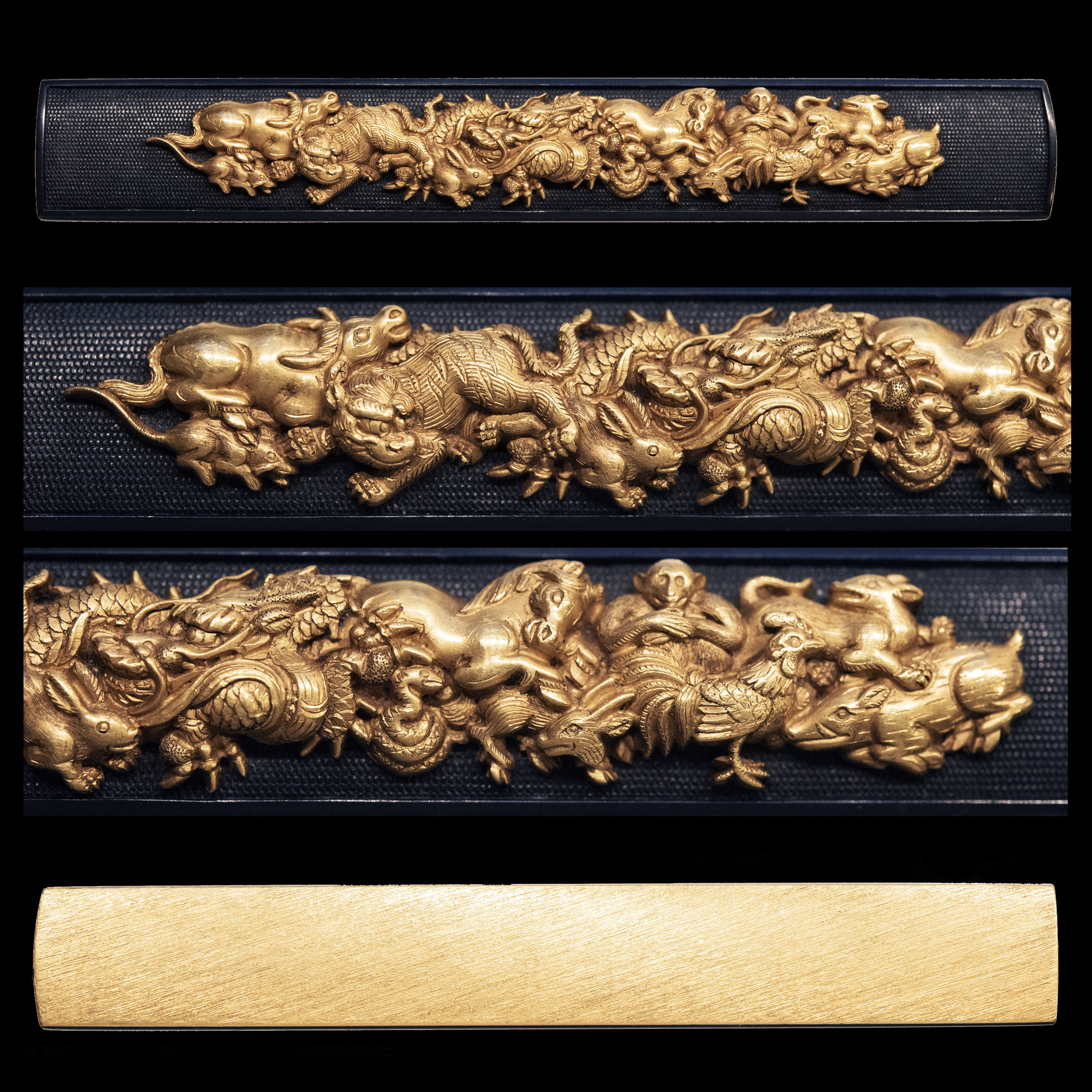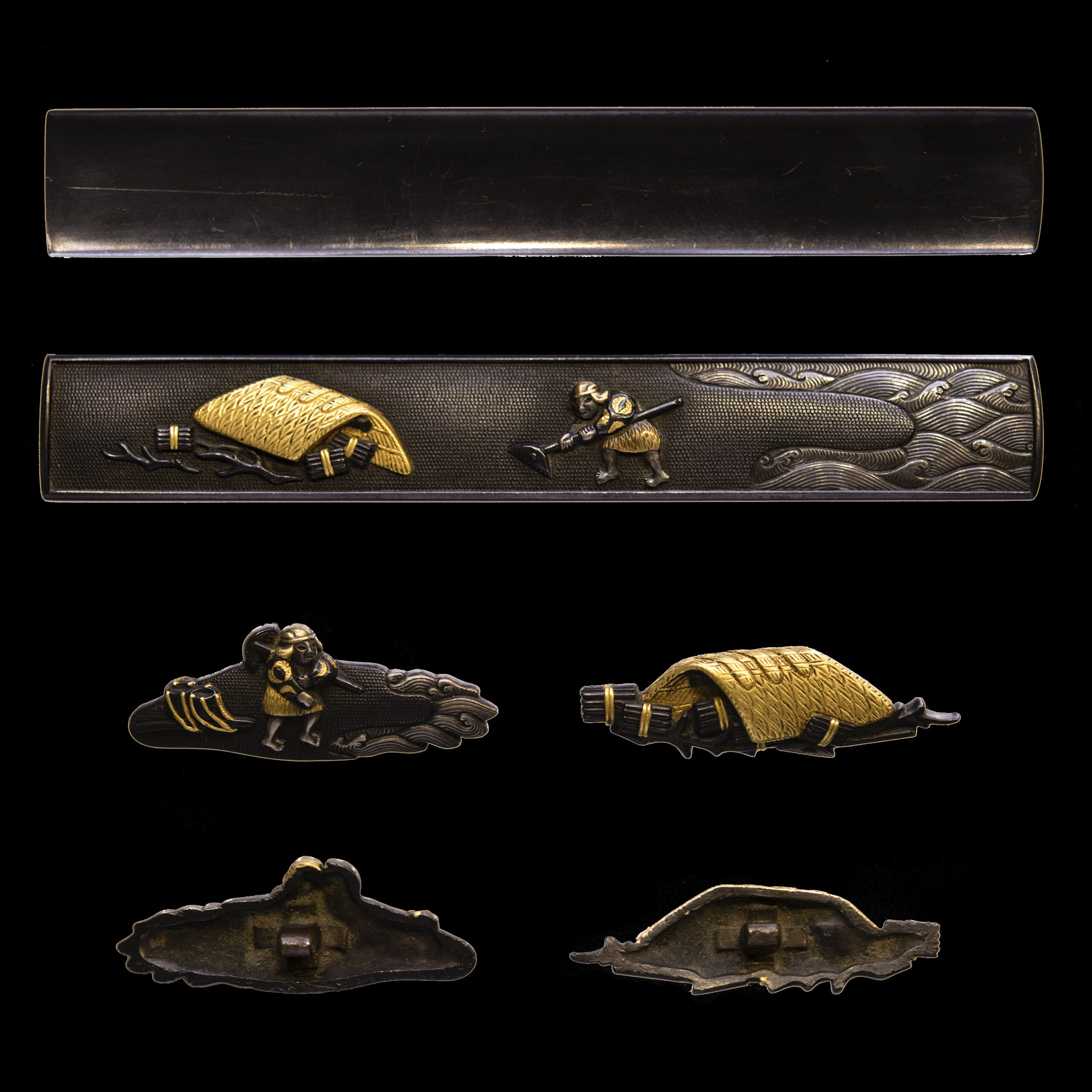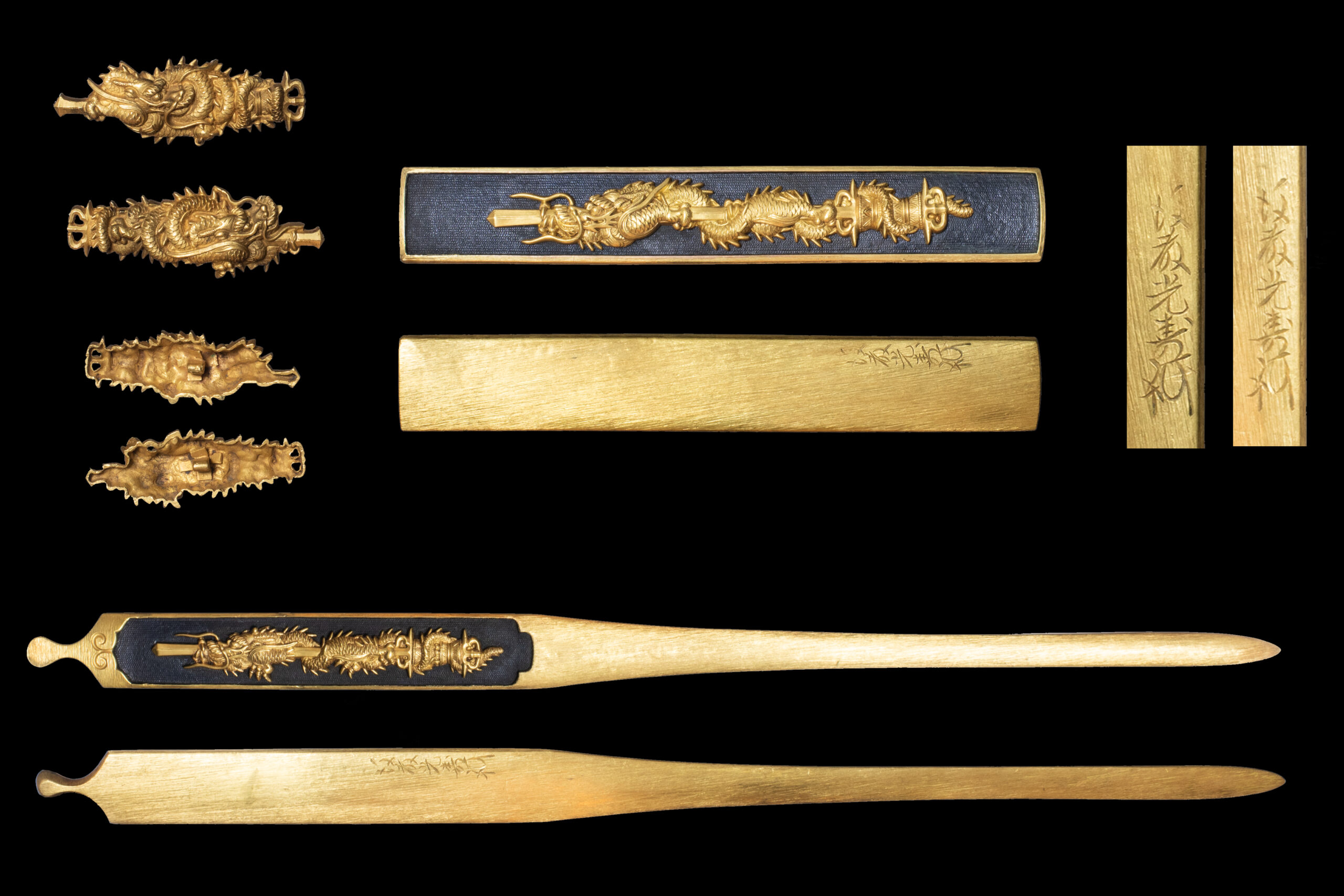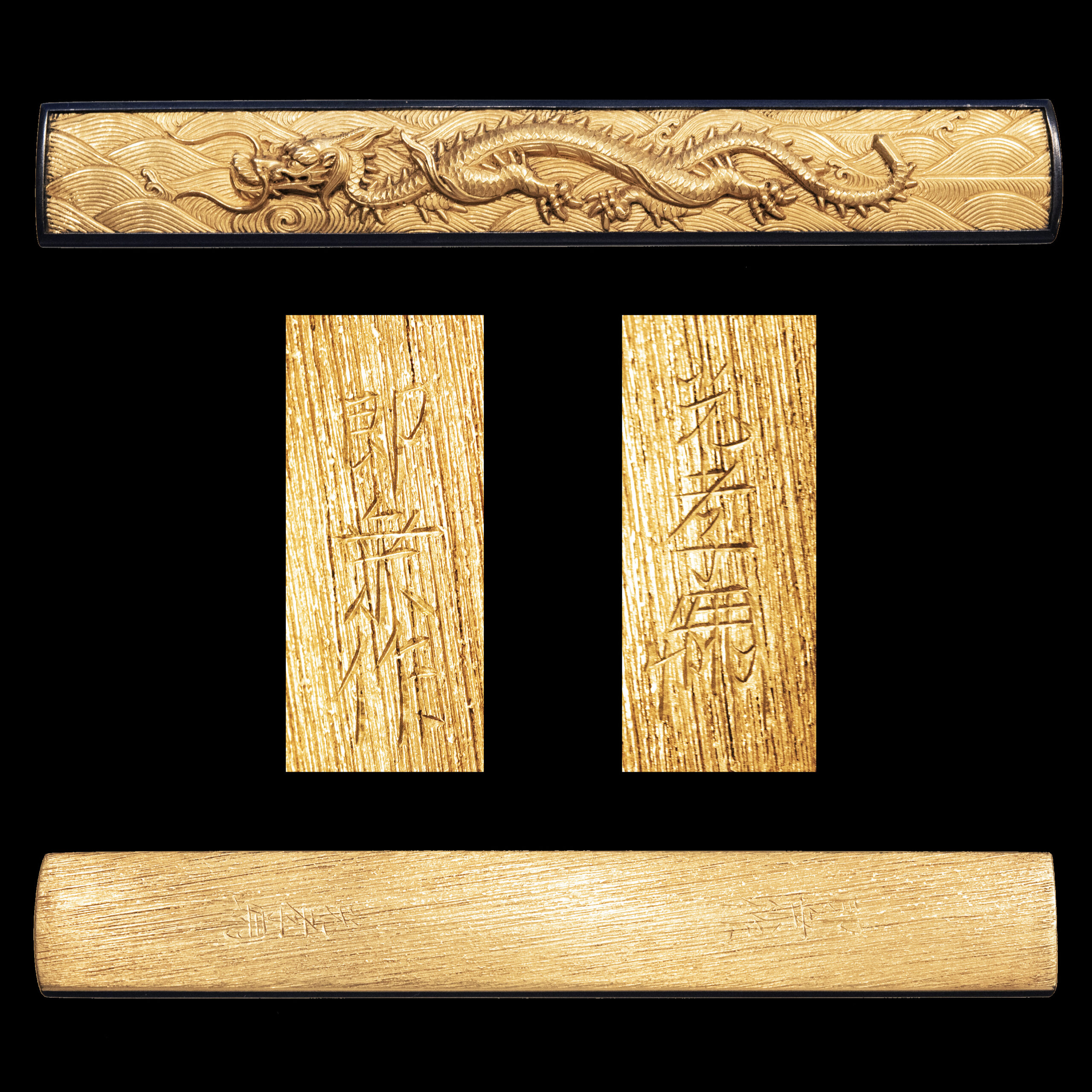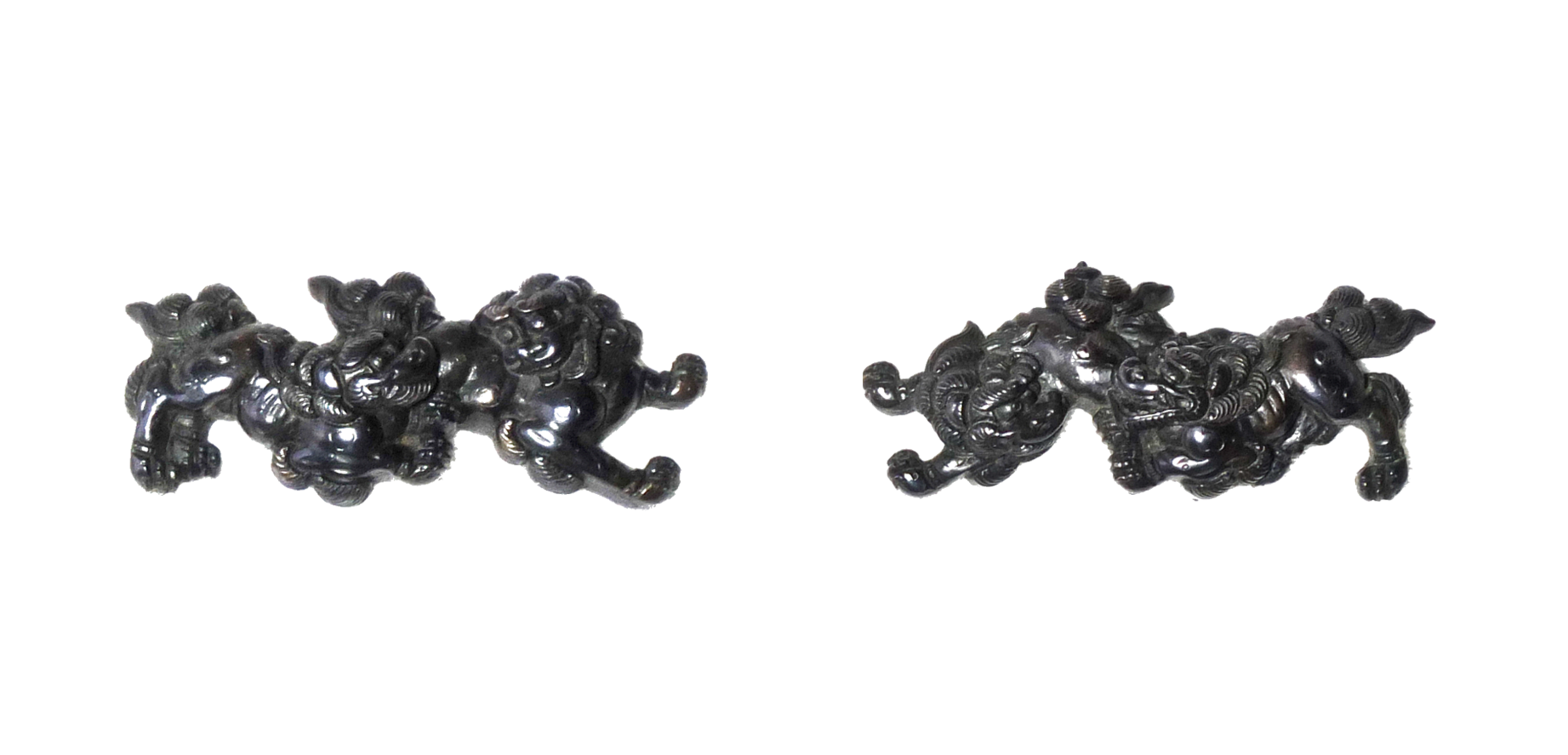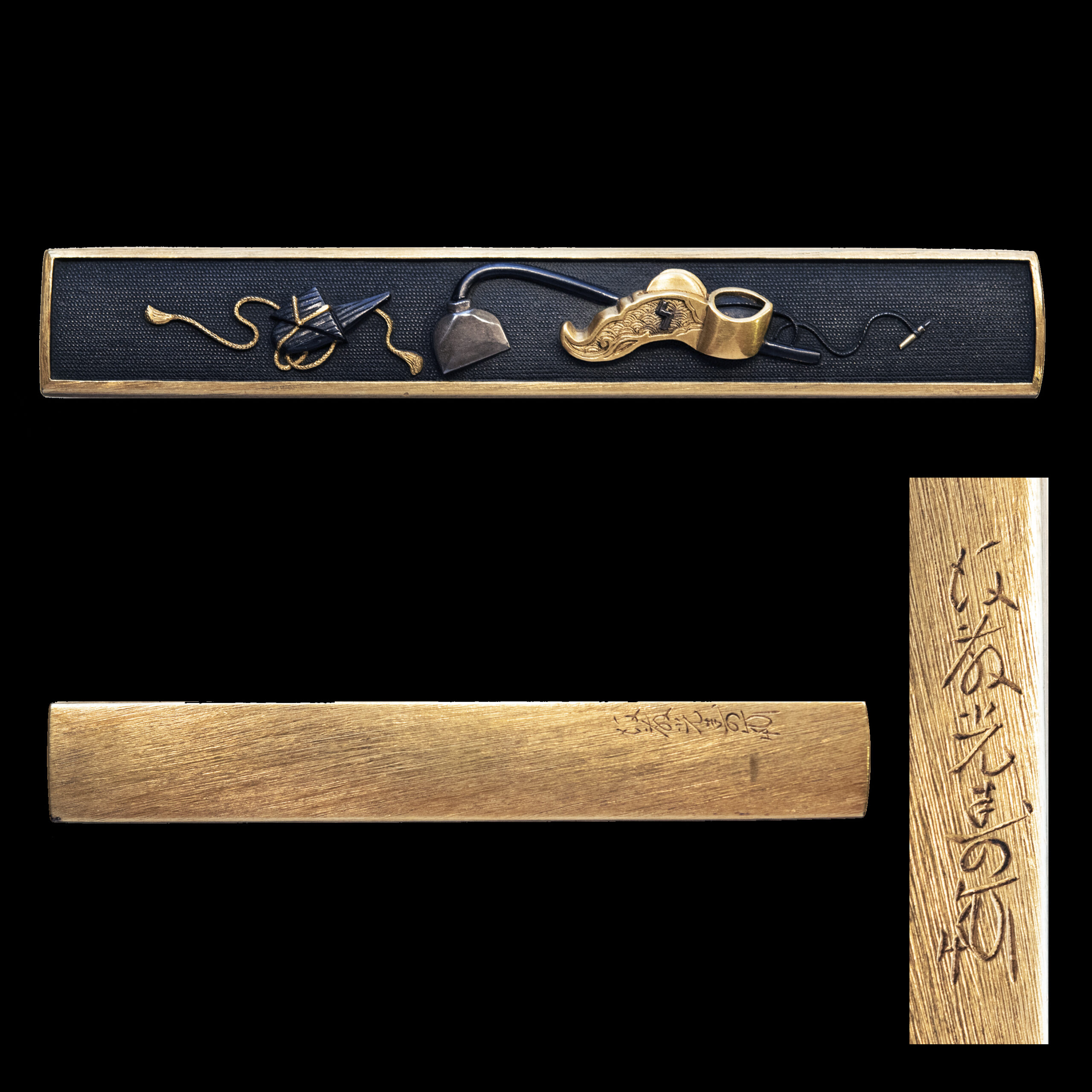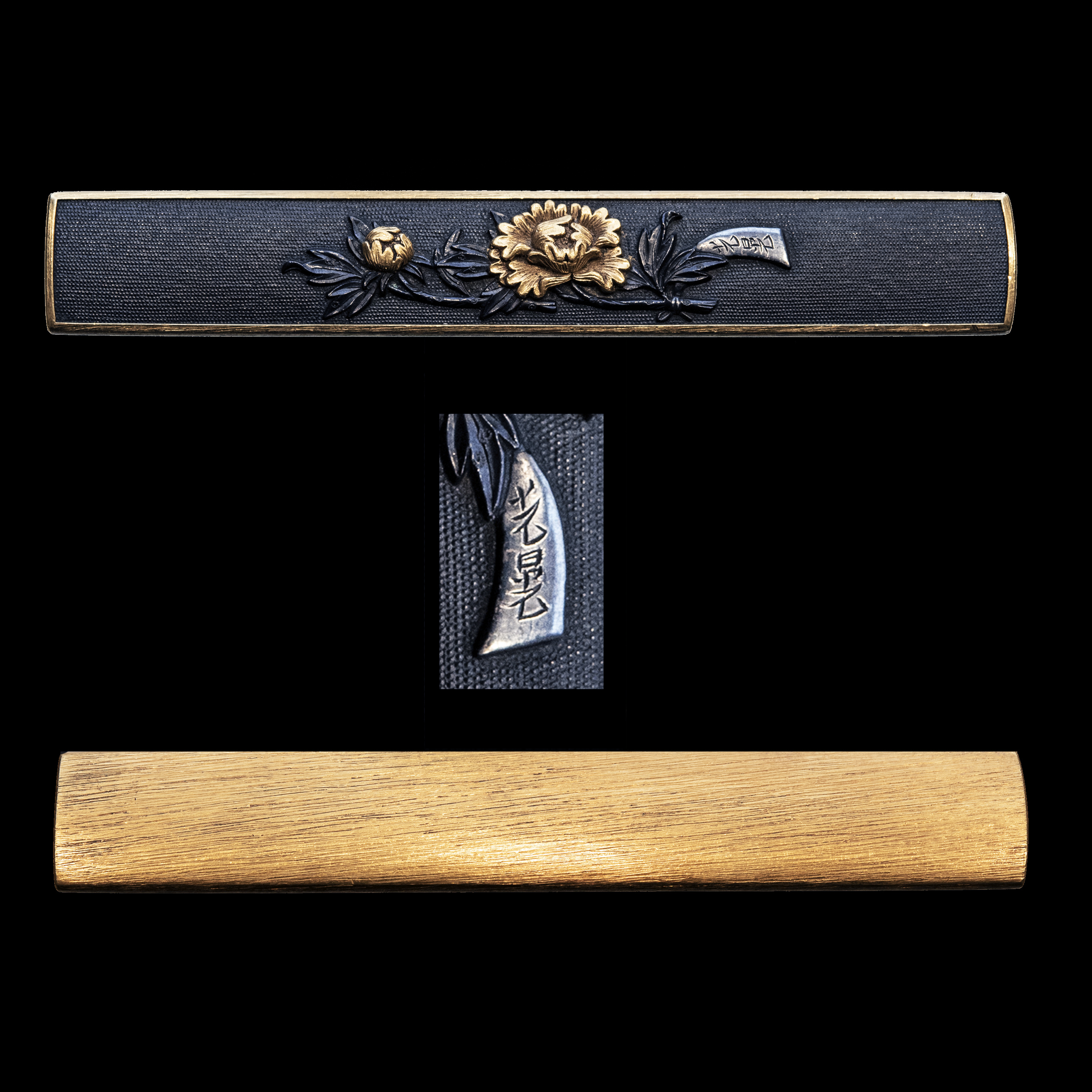Goto Yujo is regarded as the founder of Kinko carving. Even though there must have been others before him who used similar techniques he uniquely stands out with his individual workmanship and styles but also through his position being designated by the 8th Ashikaga Shogun.
There are many stories told about Yujo, among those one where he carved 14 boats and 63 monkeys out of a peach core which finally got him out of prison. Well, we leave it up to you to believe them or not.
You will find mainly Menuki and Kogai by Yujo. Many Kogai were produced by later Masters
using pieces originally carved by Yujo. Kozuka by Yujo are very rare.
Sojo was the second son of Yujo who carried the name Jiro. Only Menuki and Kogai are exempt from his period of work. The second master’s work is quite difficult to distinguish from the first master’s work. It can be seen that his works are less undulating than those of Yujo and slightly larger.
The first son of Sojo who also carried the name Jiro. He mainly produced Menuki and Kogai, Kozuka are quite rare. His work style is a bit more rough or stronger than that of the first two masters, which can very well be seen in his high relief work on the Kogai below. The motif is equally distributed over the whole plate and looks lively. You will see the triangular Tagane on the horns, heads, around the mouth and on the feet of the dragons.
Kojo was the first son of Joshin and carried the name Soichiro. He took over the workshop of Joshin at the age of 16 as the quality of his work succeeded Joshin’s. After his father’s death in battle it is said that he traveled a lot before he finally came to work under Oda Nobunaga in Kyoto again. His pieces are a bit smaller than those of Joshin and the designs more balanced. As his father he mainly produced Kogai and Menuki, Kozuka are rare. He started carving human figures which was not done by his predecessors.
First son of Kojo who carried the name Genjiro. Like his father he worked for Oda Nobunaga as master of the coin and produced Oban for him. He was the first signatory of the official rules of the Goto family which were written by Joshin and updated by Kojo. The rules described amoung others how the family members had to work together in one workshop, how branches should be introduced and that every member should only posses one stamp with the Kiri Mon.
Tokujo’s pieces are bigger than Kojo’s and more magnificent. He produced Kogai, Menuki, Kozuka as well as Tsuba. Pieces signed directly by him are rare.
Eijo was the oldest son of Tokujo and carried the name Genshiro. When he took over the the workshop with 18 years of age he called himself Shirobe Masamitsu. He and his father were the first Goto masters who worked for the Tokugawa Shogunate. As Tokujo’s brother Chojo had to go to Edo to work there for Tokugawa Ieyasu, the Kyoto main branch of the Goto family were on the verge of loosing its standing. However, Chojo convinced Ieyasu to return to Kyoto and help Eijo to rebuild the main branch. After Eijo’s death Tokujo took over the workshop again to assign Kenjo as its leader later.
Eijo’s work is similar to Tokujo’s but a little bigger in size. His style is quite elegant. There are many Kozuka made by him and signatures by himself are extent.
Kenjo was the third son of Tokujo and Eijo’s younger brother. He founded a branch workshop under the name Ribe and called himself Ribe Masatsugu. After the early death of Eijo he represented the main branch of the workshop from Edo as its leader until 1628 when Sokujo took over. The Maeda clan called him to Kanazawa (Kaga) where he founded the basis of the Kaga carving artists.
It is said that Kenjo was equally skillfull as Yujo and Kojo. His work his lively and minute. Kano Natsuo himself said about Kenjo that he was the founder of the Goto style as it was known after him. There are many Kozuka extent.
The second son of Eijo carrying the name Genhichiro. As described above he only became the leader of the workshop at the age of 28. However, he died already three years later.
Due to him only being the head of the workshop for three years, signatures by himself are quite rare. His work resembles that of Kenjo, however regarded as not as skillful as Kenjo’s. However pieces by Sokujo are quite rare.
Second son of Kenjo. He took over the leadership of the workshop in 1636.
The style resembles Kenjo’s however, less undulating.
The fourth son of Sokujo. He took over the leadership of the workshop at the age of 25.
Third son of Senjo Mitsukiyo of a branch family and grandchild of the seventh master Kenjo. When the oldest son of Renjo died at the age of 15 no descendant was found why a daughter of Renjo was married to Tsujo. He took over the workshop at the age of 34.
Under the strong influence of the upcoming Machibori schools in Edo, Tsujo changed the style of the school to a more naturalistic one.
Eldest son of Tsujo. He took over the workshop in 1722.
The eldest son of Jujo. Took over the school in 1742.
The third son of Jujo. Was adopted by Enjo who did not have children and inherited the school after his death.
Eldest son of Keijo and took over the school in 1804.
The fourth son of Shinjo and took over the workshop in 1835 when his father retired.
He was the most skillful master after Jujo.
Tenjo was the second son of Kujo Koran from a Goto side family who was announced the school master by Hojo shortly before his death. It is said that Goto Ichijo who was Tenjo’s uncle had to convince the other family members to accept Hojo’s decision.
Tenjo’s work is quite scarce, however, he was very talented and some of his works surpass even Goto Ichijo’s.
The Goto family worked for the highest nobleman of Japan over 400 years and span over 17 generations. They held positions as public servants being responsible not only for the sword fittings of the shogunate but also for the official coins produced by the government. The founder of the Goto School served as a boy for Ashikaga Yoshimasa the 8th Shogun in Kyoto. One has to know that this was as early as Middle Muromachi (around 1450) and that the first Goto Master became literally the founder of the engraving technique which is common for Soft-metal works until today.
The early Goto Masters were only producing Mitokoromono sets of Menuki, Kogai and Kozuka. In theses early times, Aikuchi Koshirae were often used which had Tsuba and Fuchi-Kashira made from Horn. Sometimes only Futatokoromono sets of Menuki and Kogai were produced, the Kozuka of which was added by a later Master. The 4th and 5th Master started producing Tsuba as well and from the 9th Master full sets including the Fuchi-Kashira can be seen.
The peony or Japanese „Kiri“ is seen in abundance in the works of the Goto family until the 6th Master. It used to be an old sign of the Tenno and was handed to the Ashikaga Shogun during the Nanbokucho period and became one of their code of arms. The Ashikaga furthermore handed it down to strongest vassals, thus it became quite popular by the end of the 16th century and was finally forbidden by Hideyoshi 1591.
Tagane
An important tool to identify early Goto pieces is to observe the Tagane (chisel traces). It’s best seen in the Horns of their dragons. A triangular shape chisel was used from the first till the 8th Master. Later masters used round chisels as well and from the 12th Master onwards only round chisel traces can be seen.
Signatures
Signatures were performed by the Goto masters on their works only from the 5th Master onwards. For earlier pieces the later Masters produced certificates (origami) to testify that those pieces were genuine. It is quite interesting to note that these certificates were given monthly by a committee of all family members. This is is quite similar to the evaluation committee (Shinsa) held by the NBTHK.
Other Important Characteristica
If you want to identify genuine Goto pieces here are some characteristics you should look for:
- Eyes – Dragon and Lion (Shishi) have a vertical chisel in the outer corner of the eyes
- Forehead – Dragon and Shishi have always four chisel strokes on each forehead
- Tagane – as explained above

